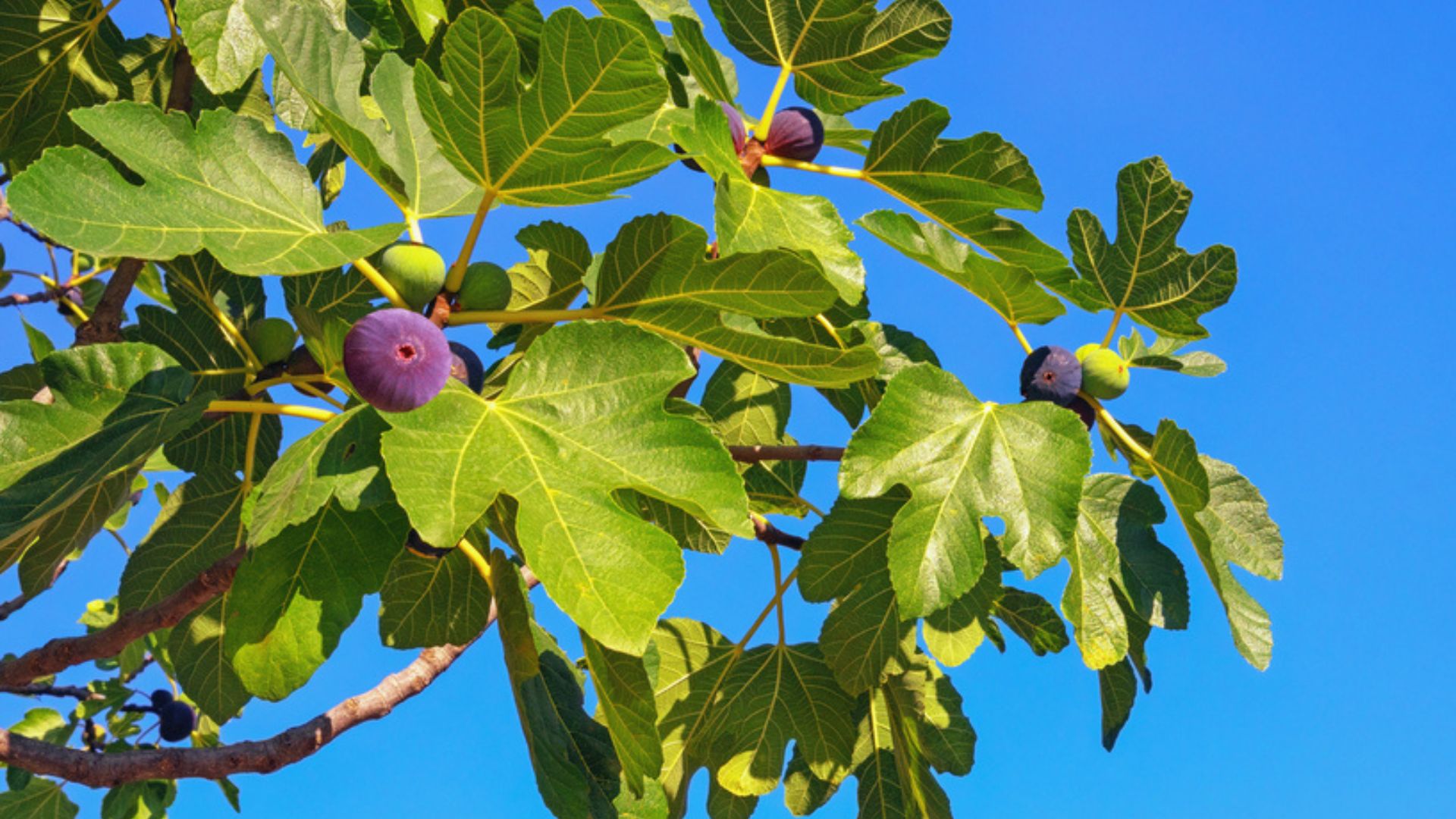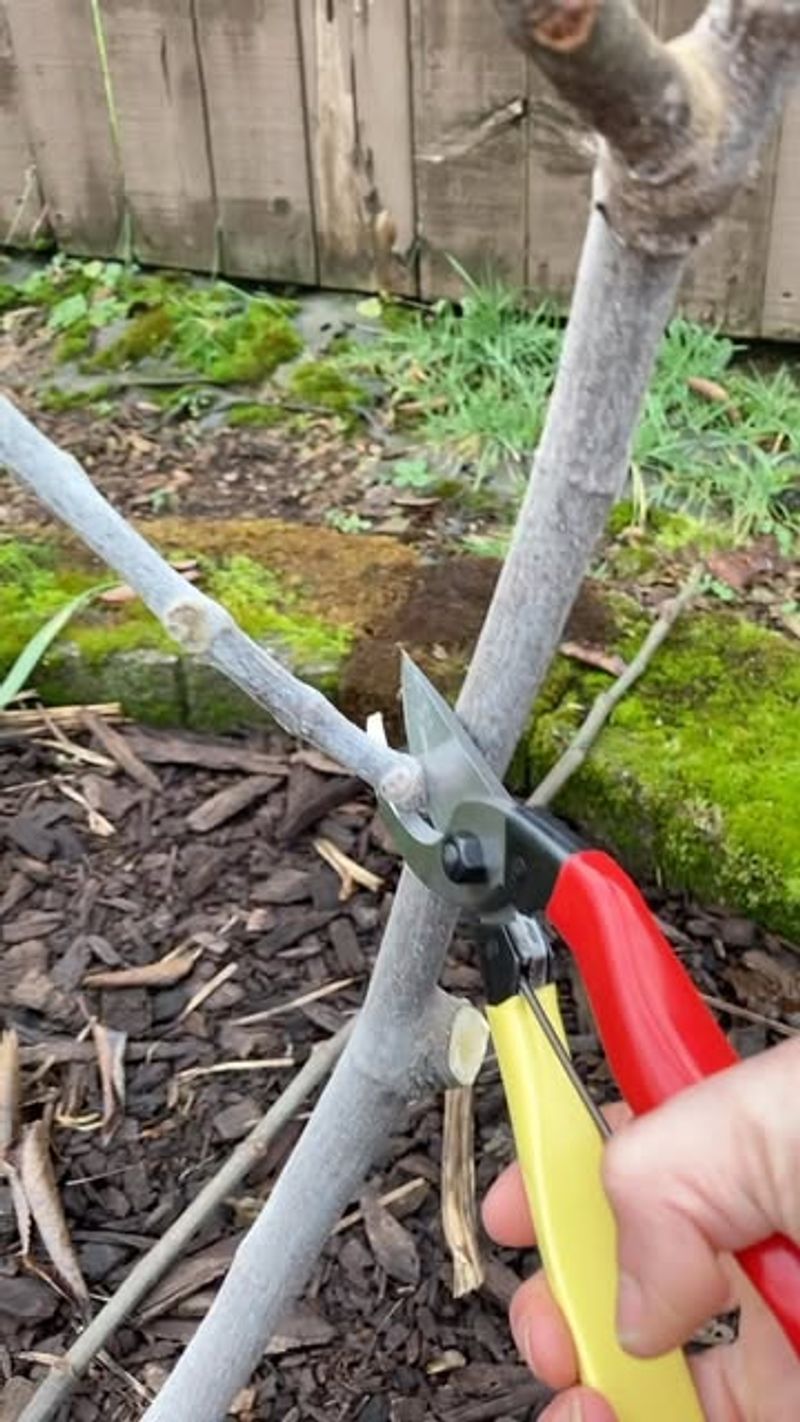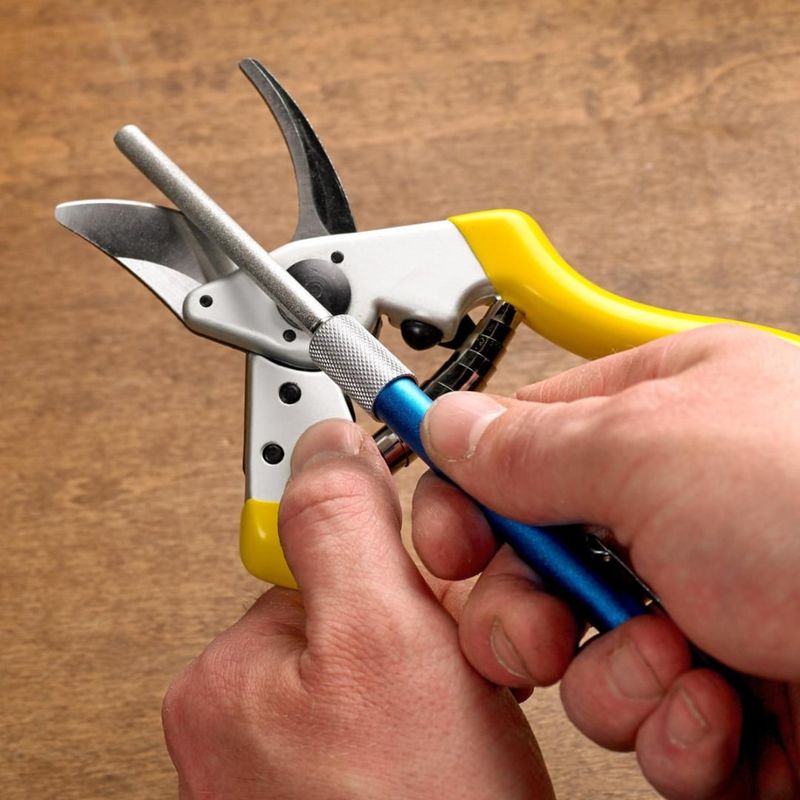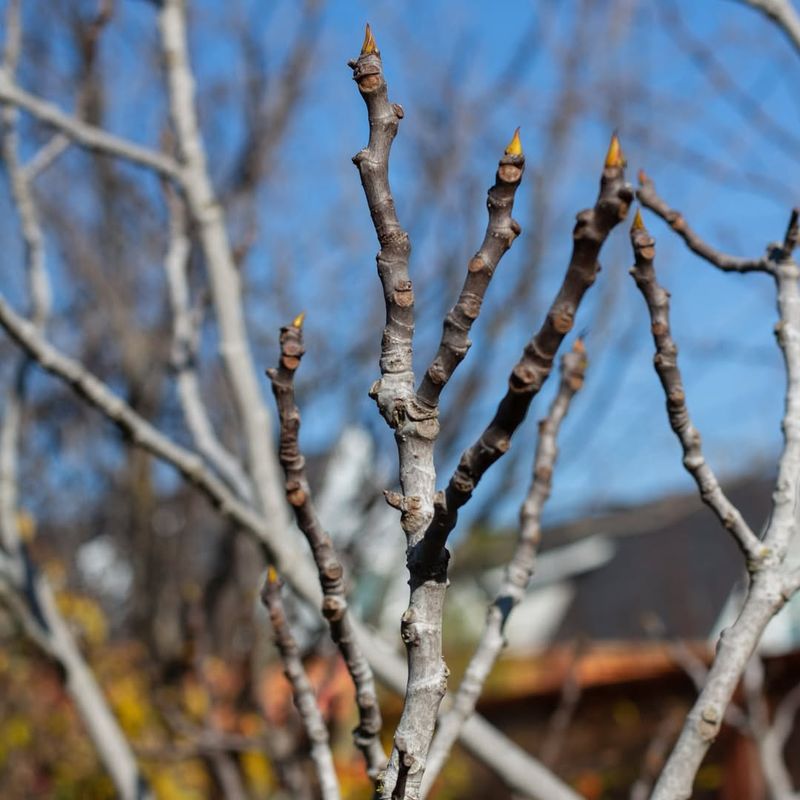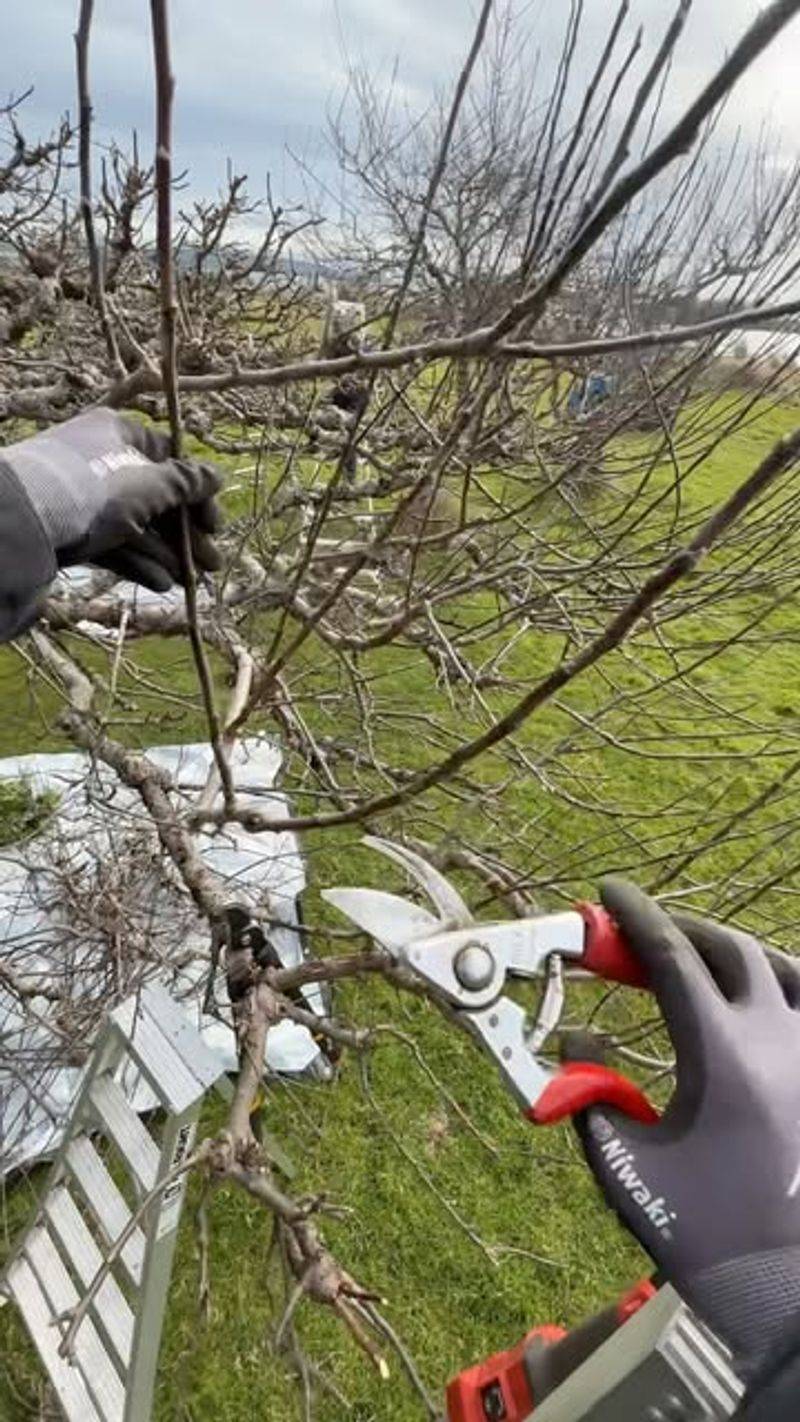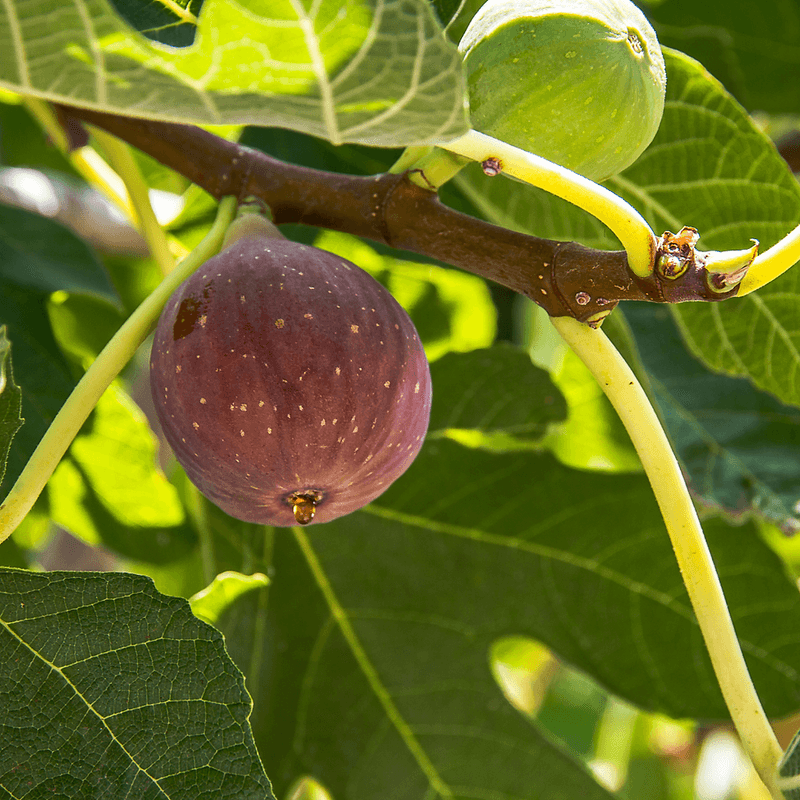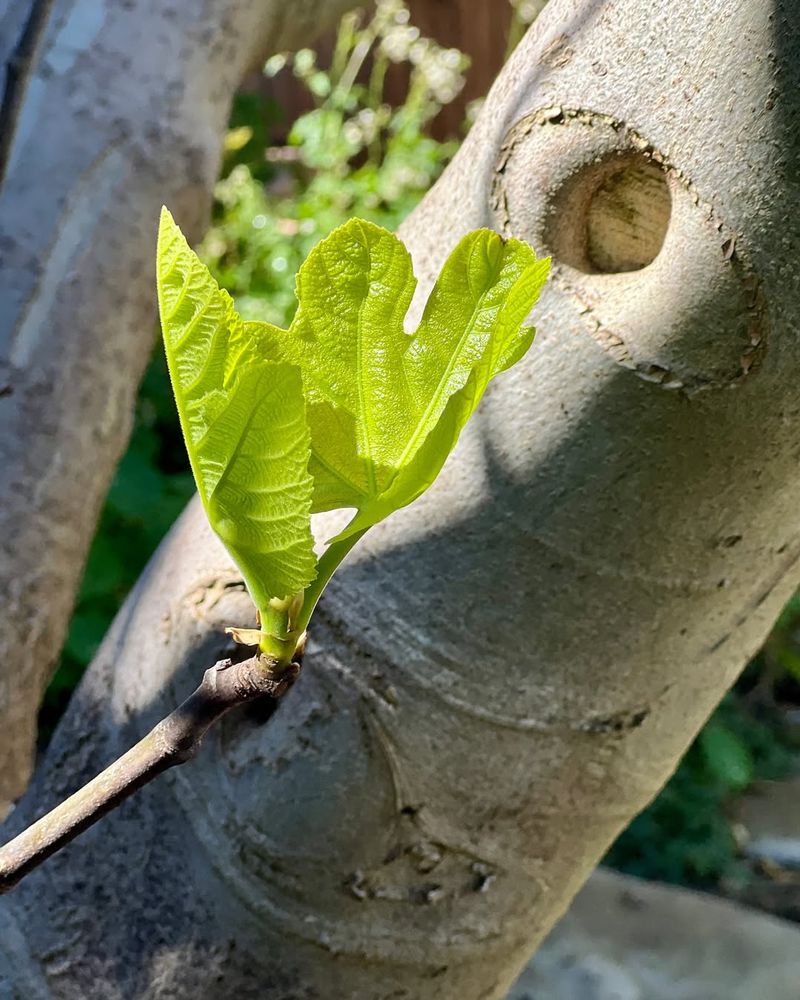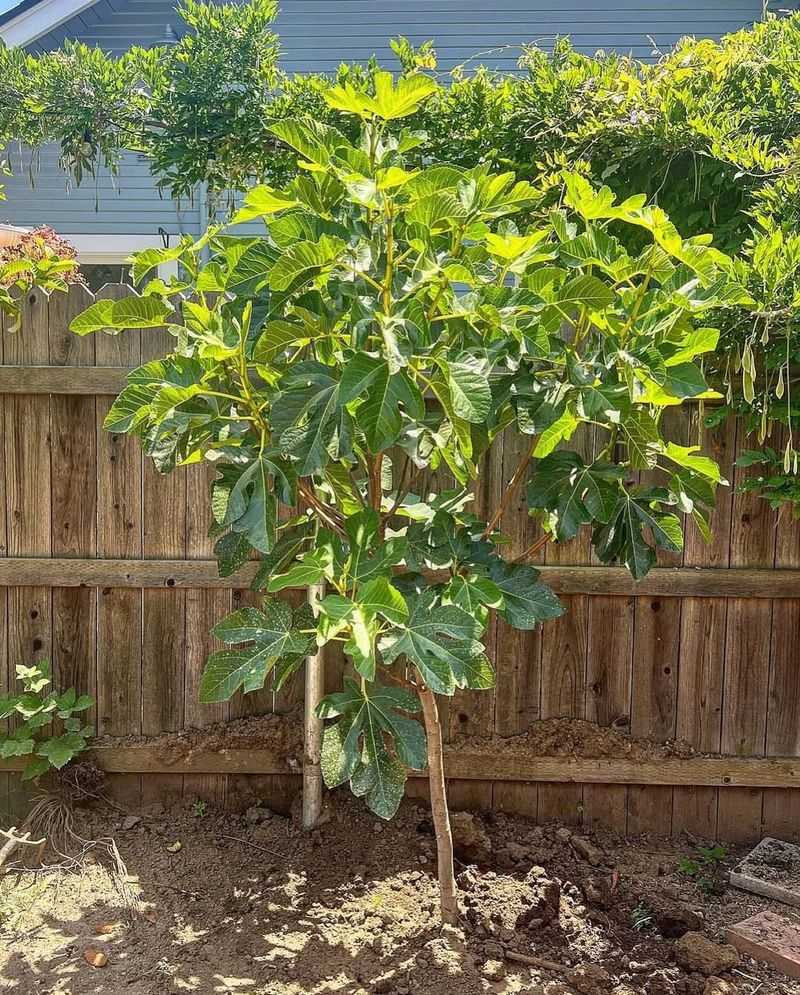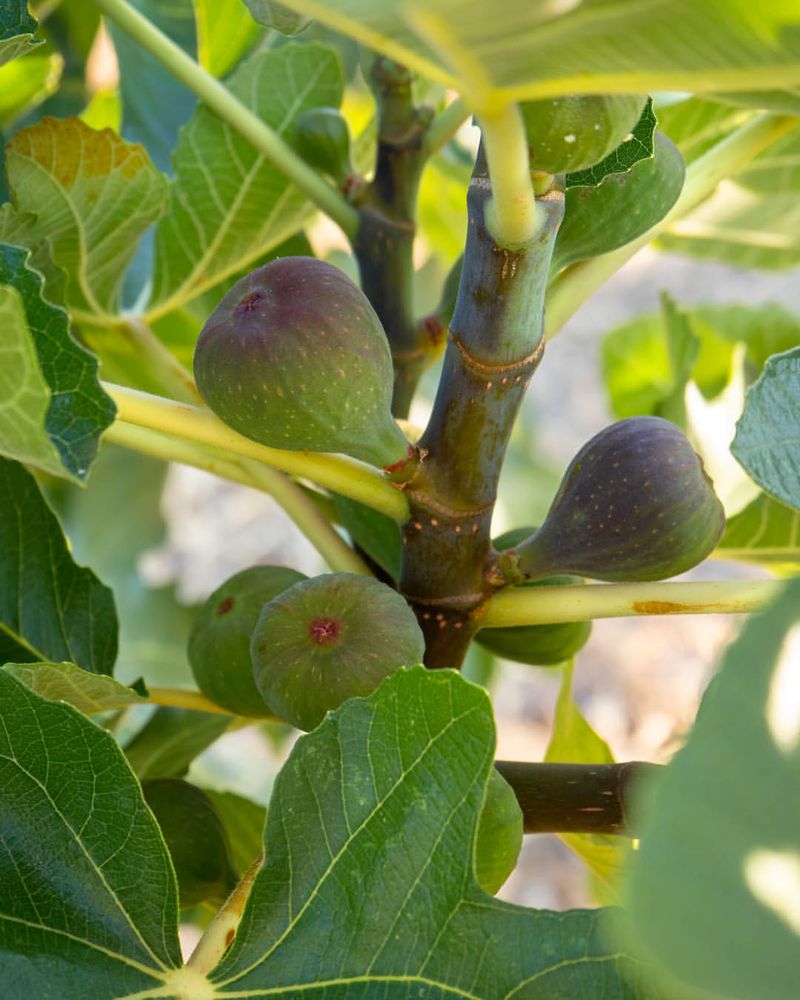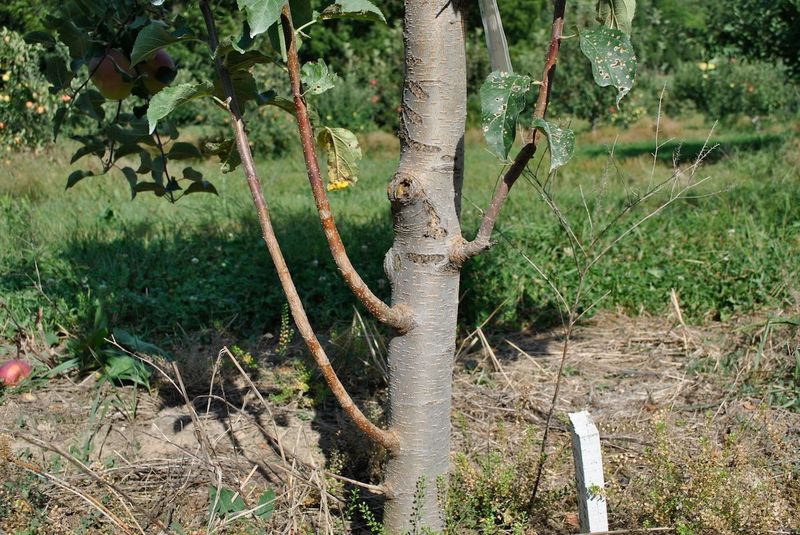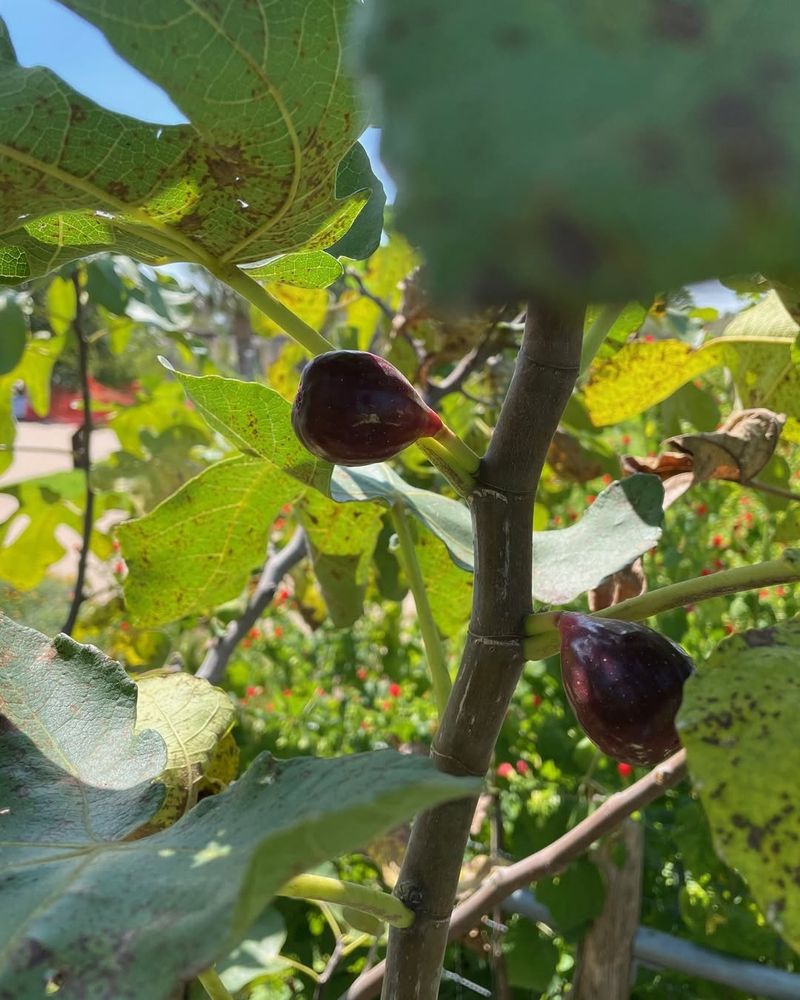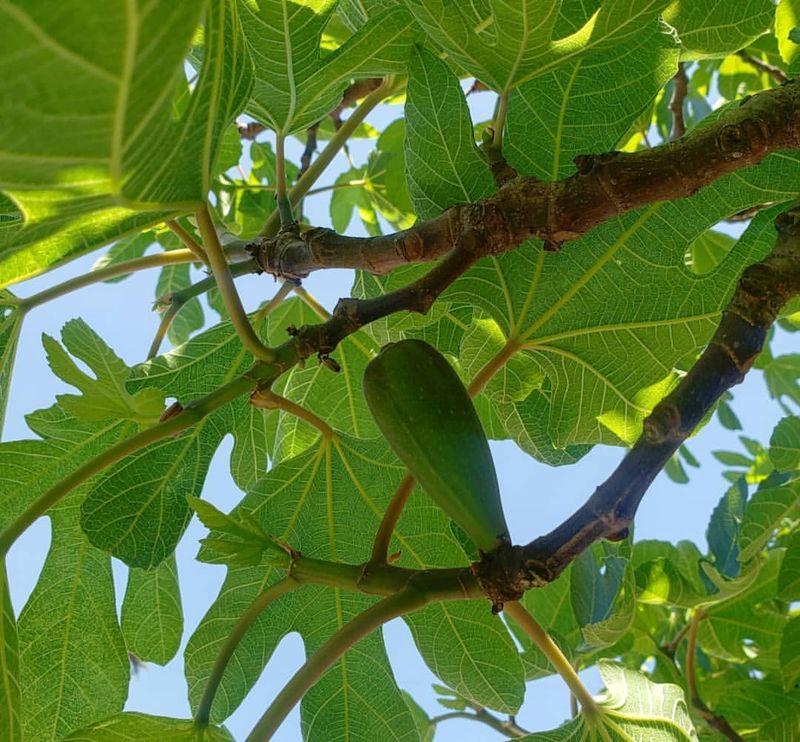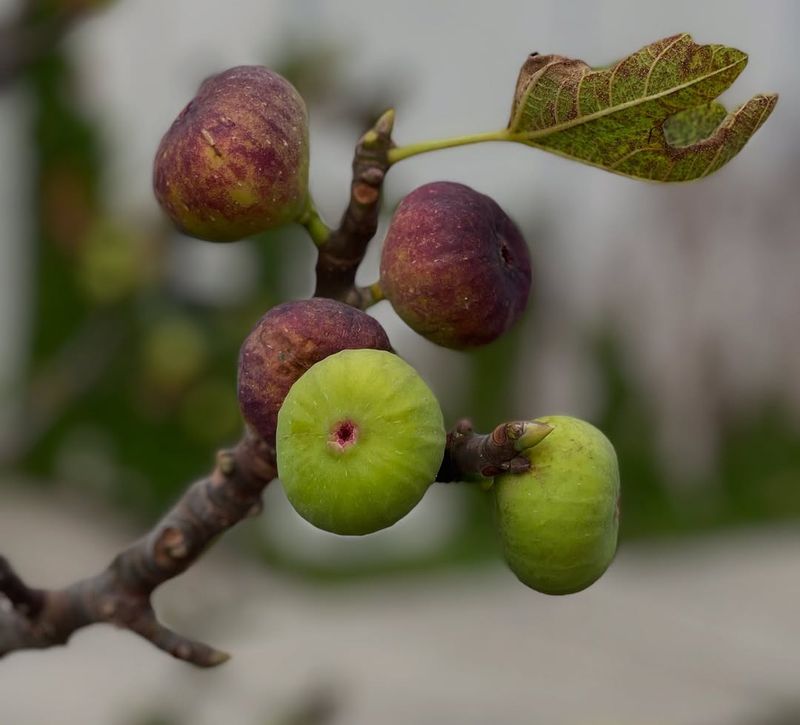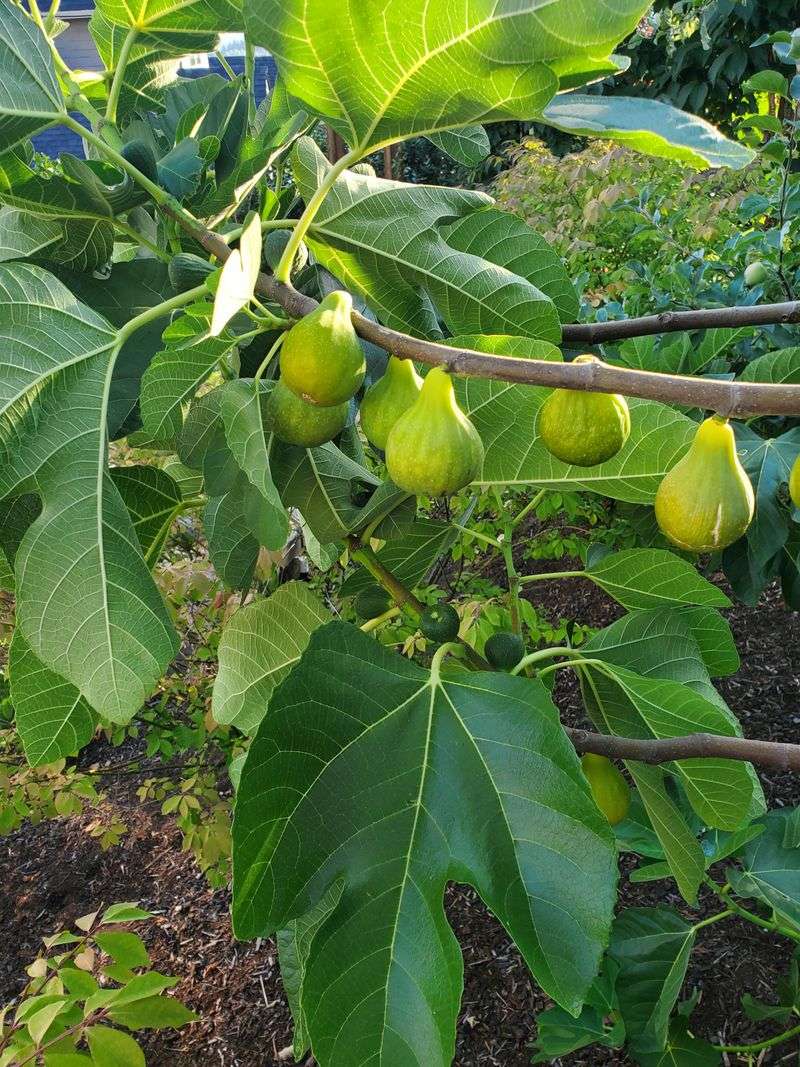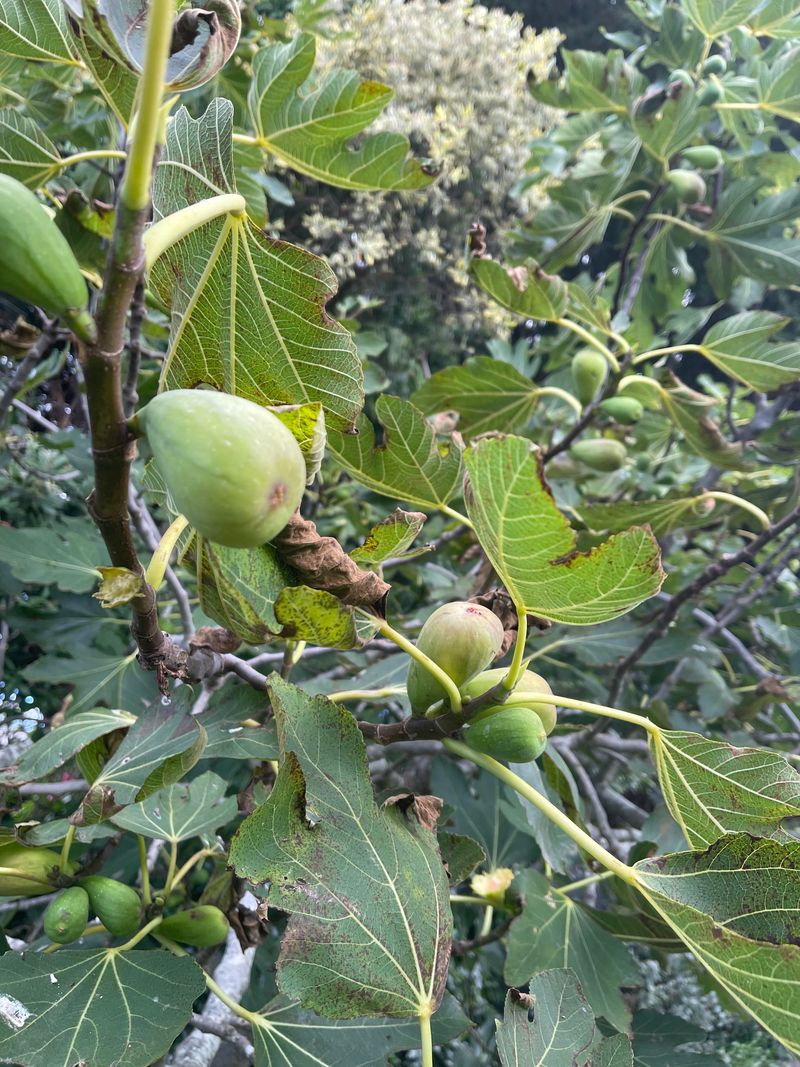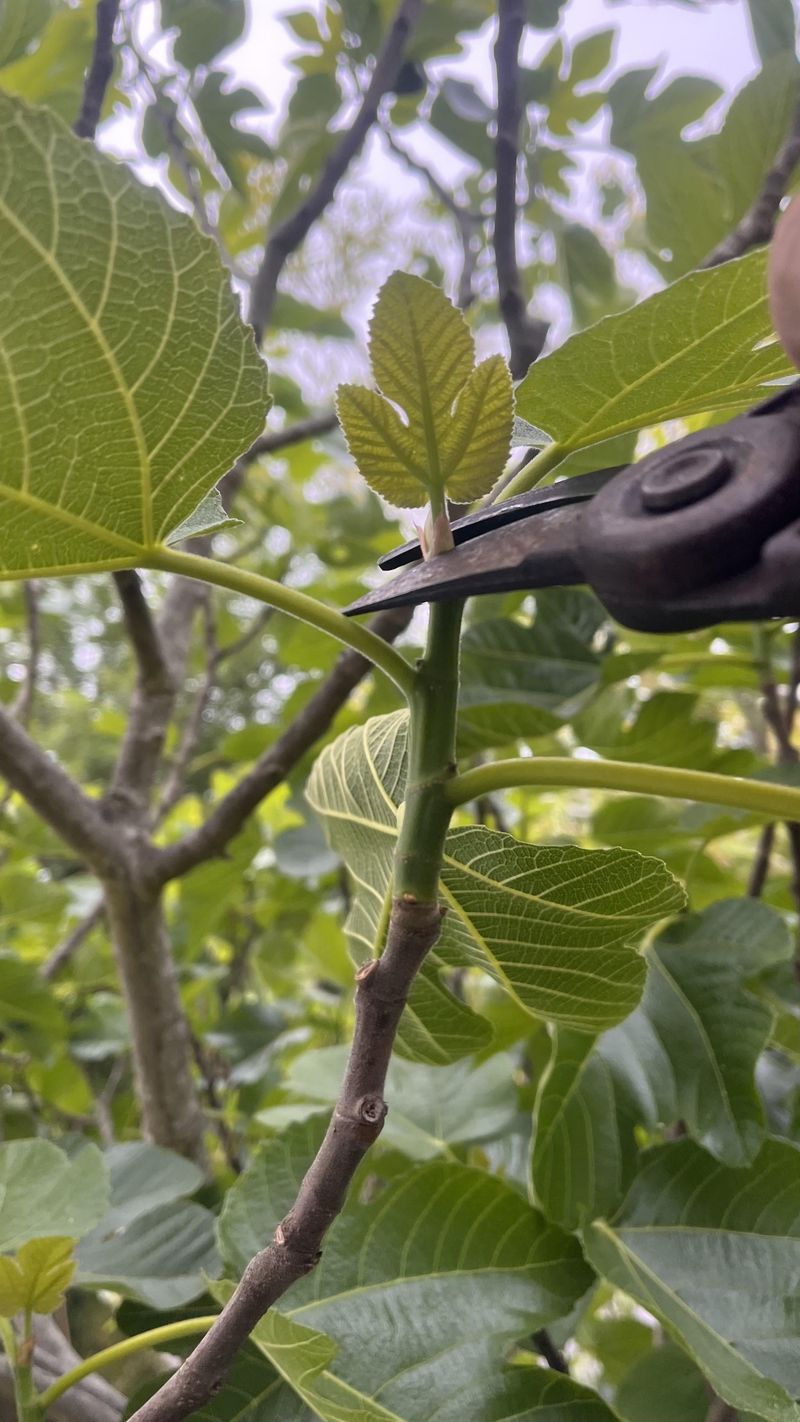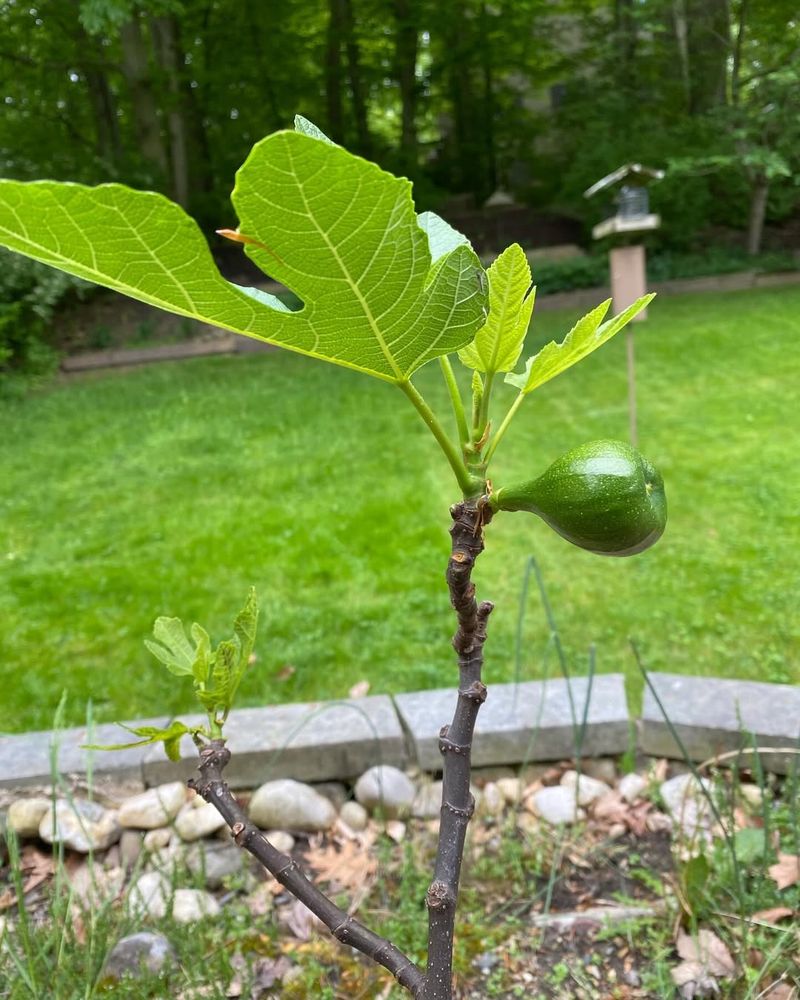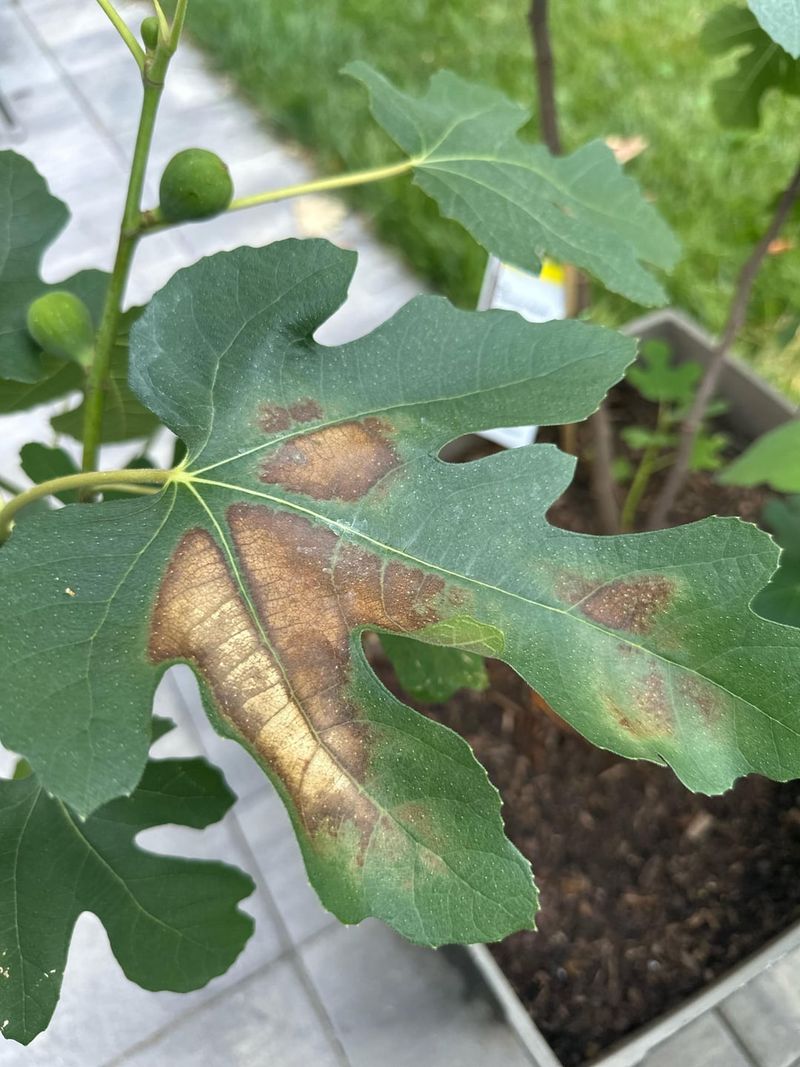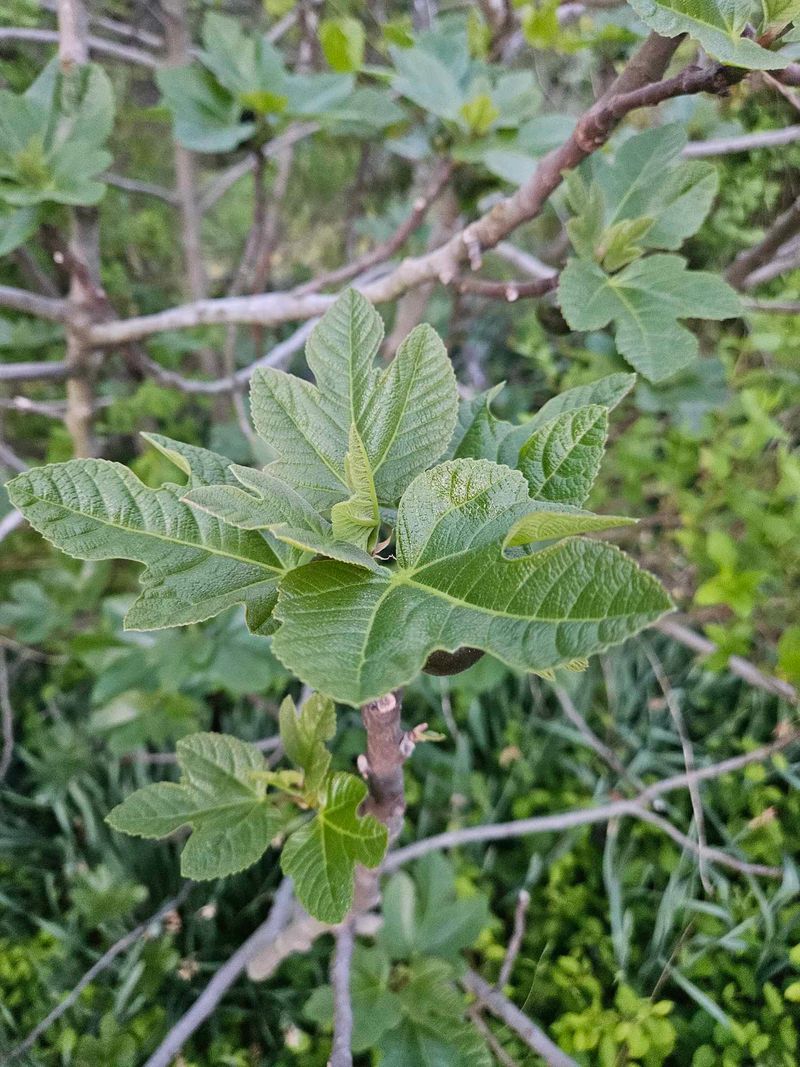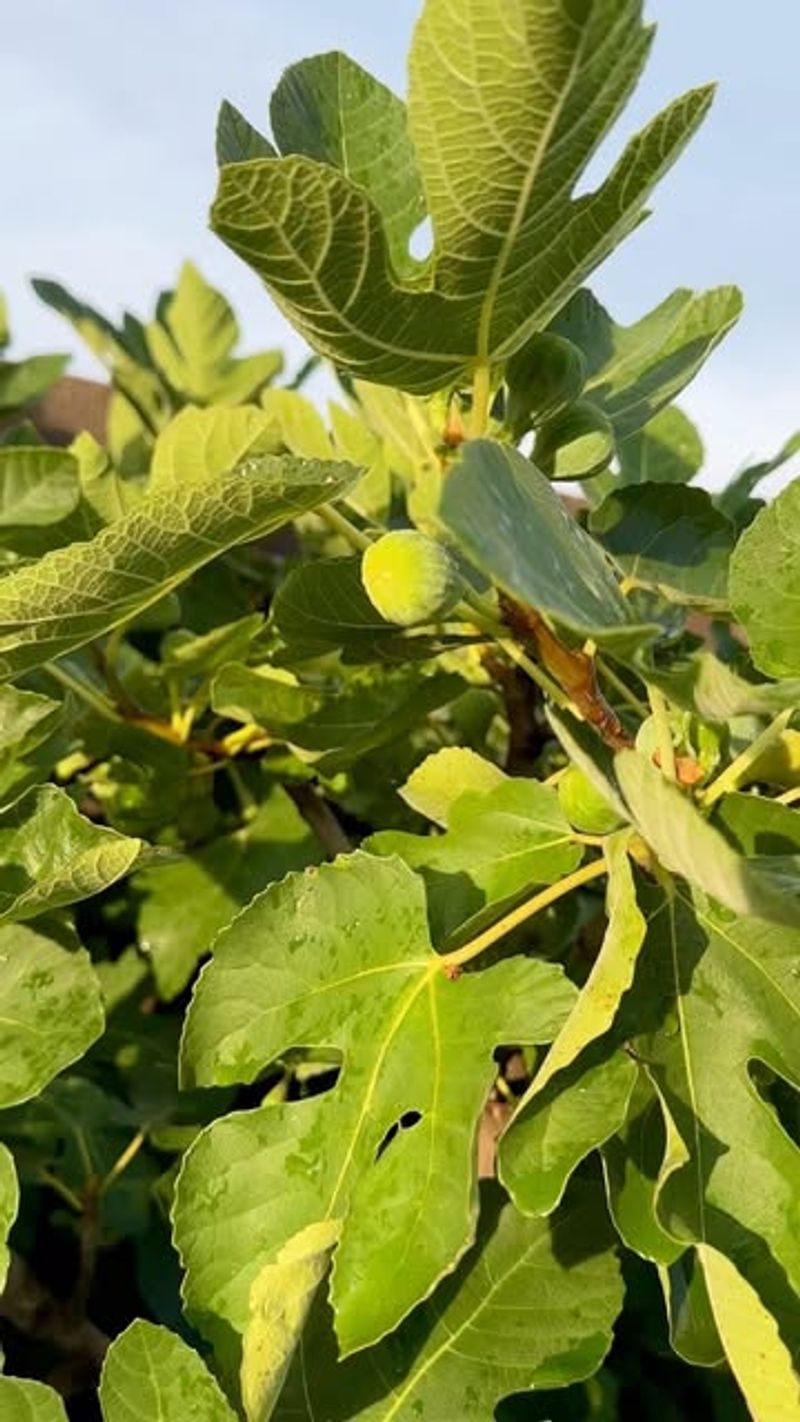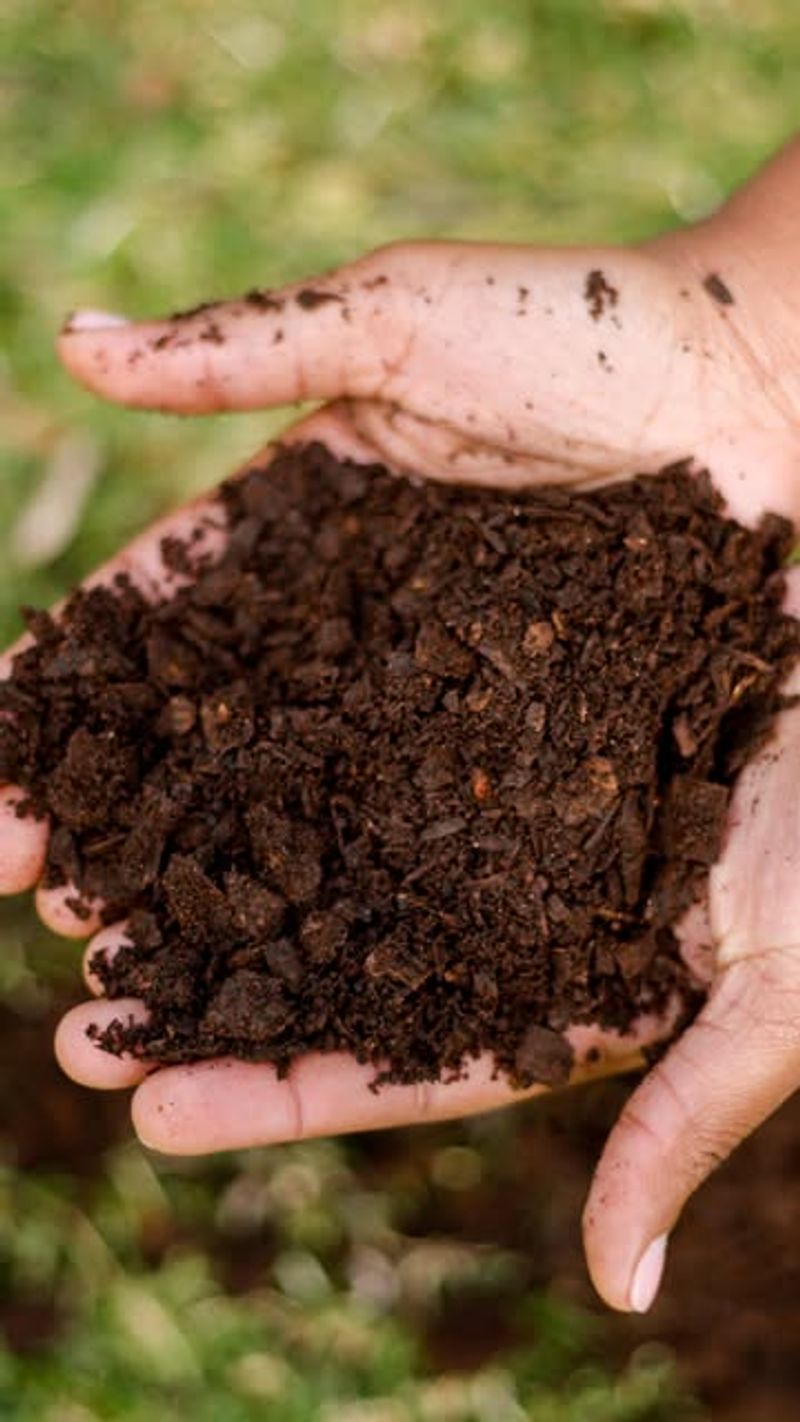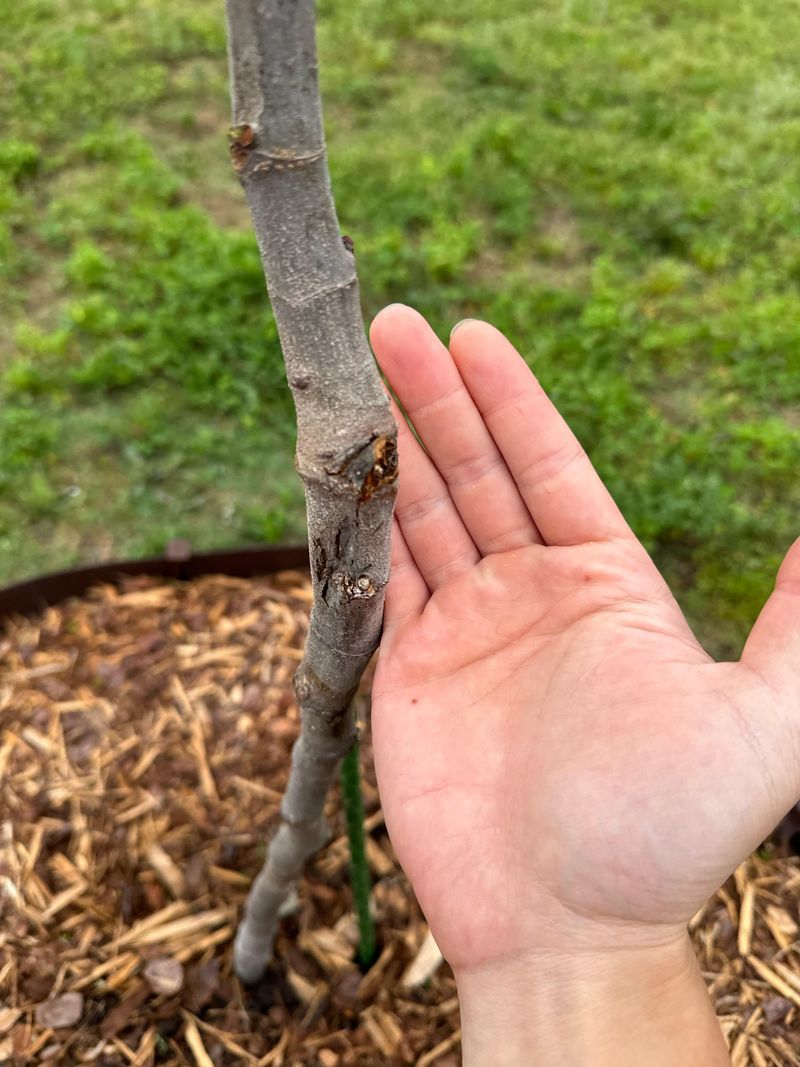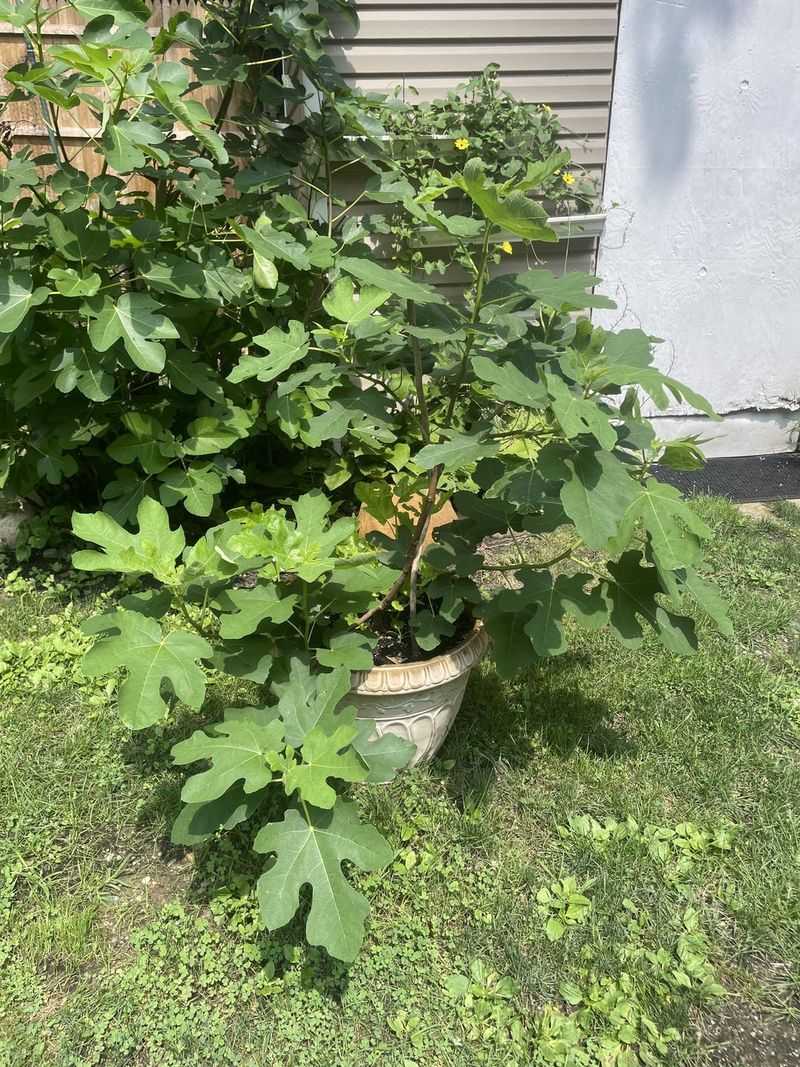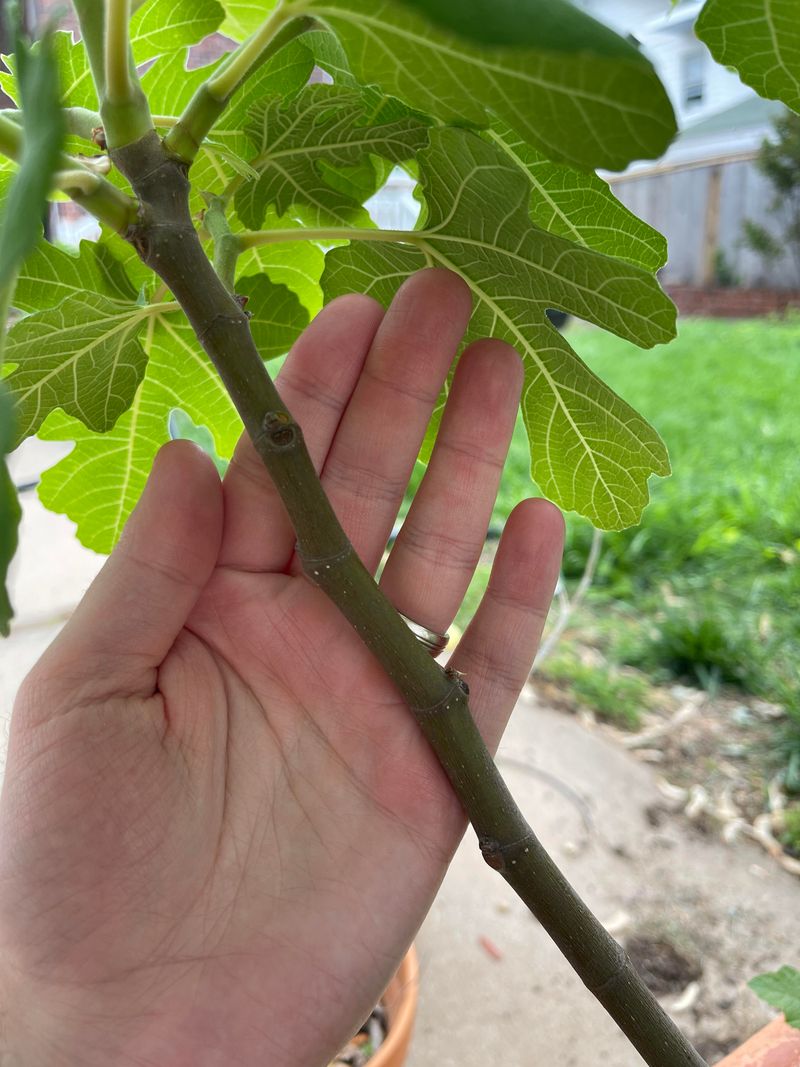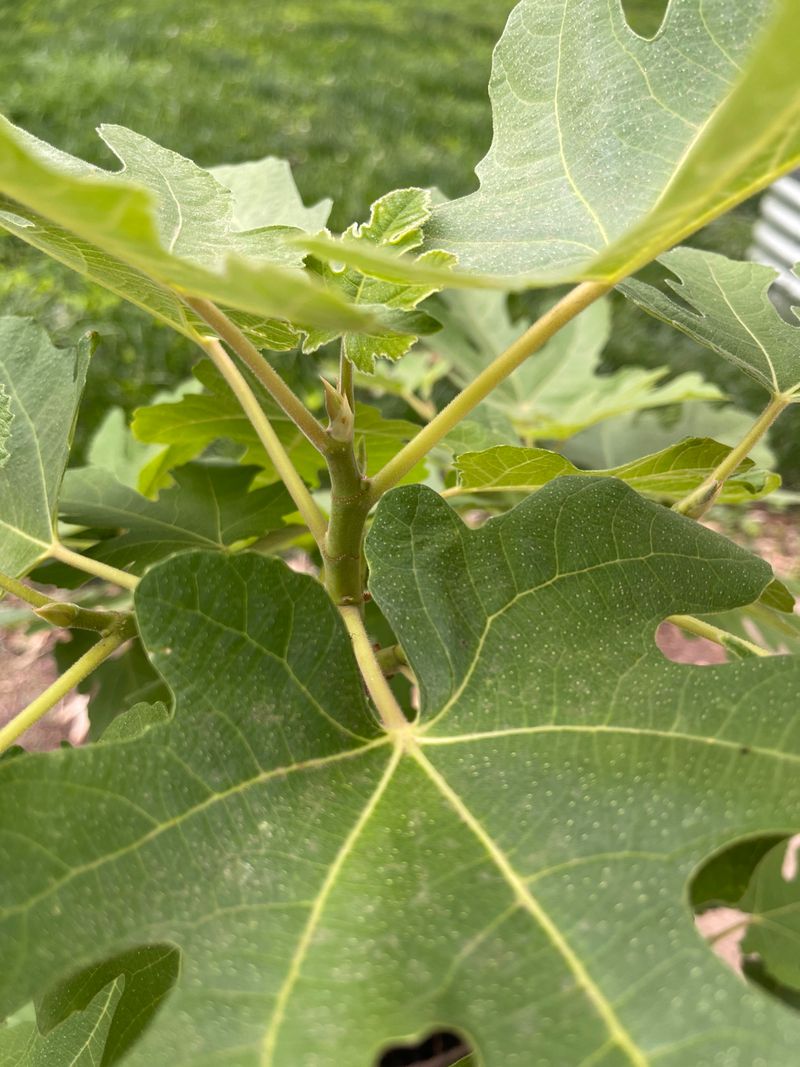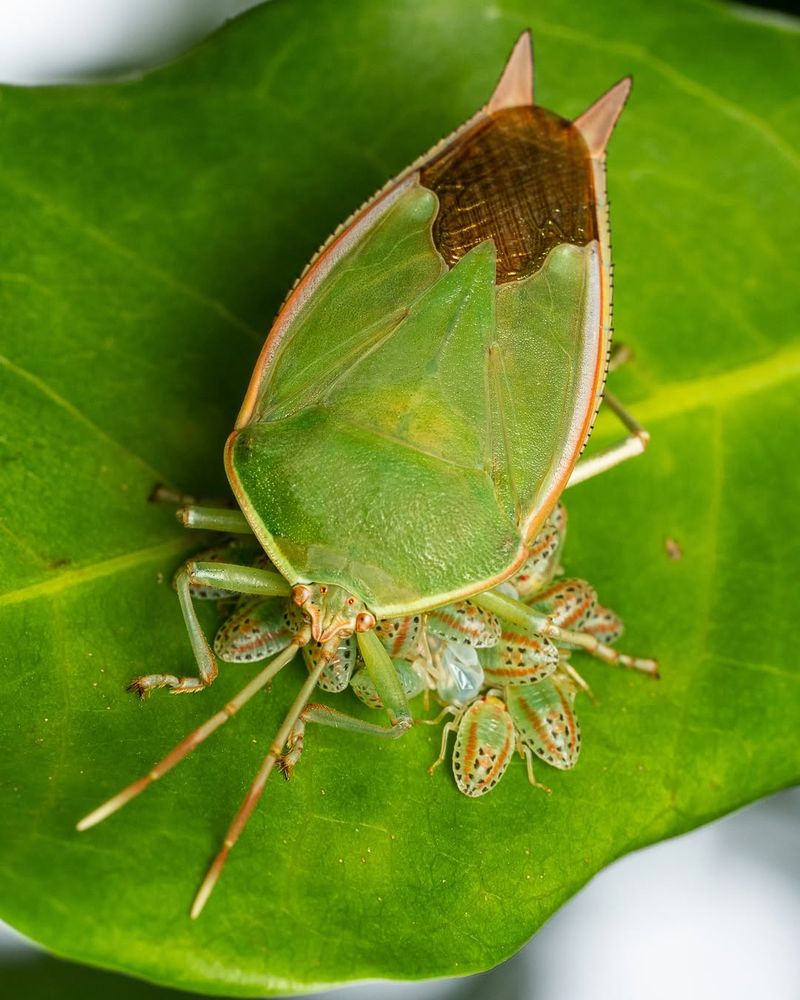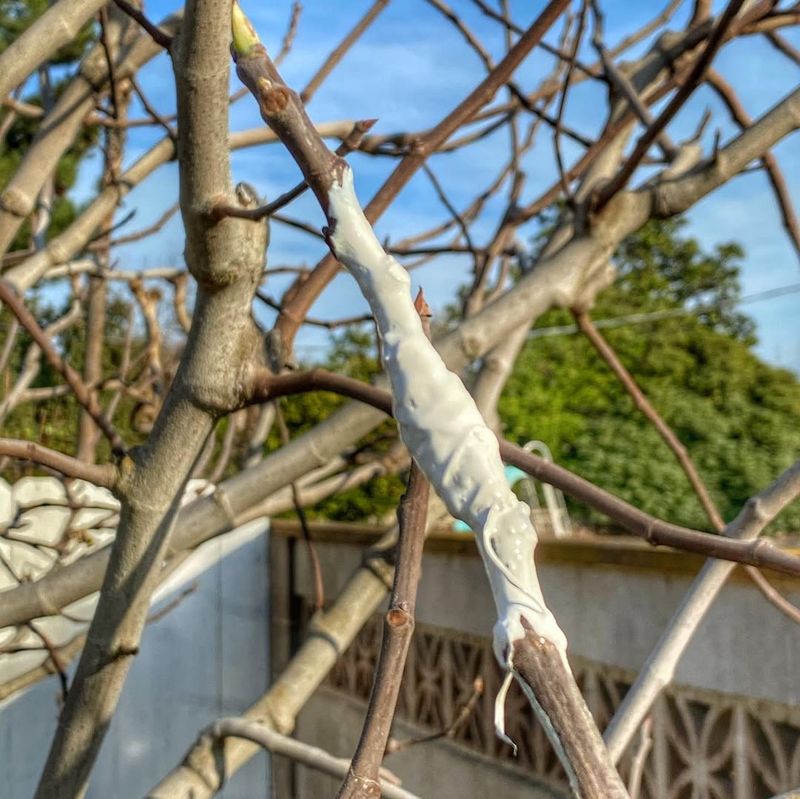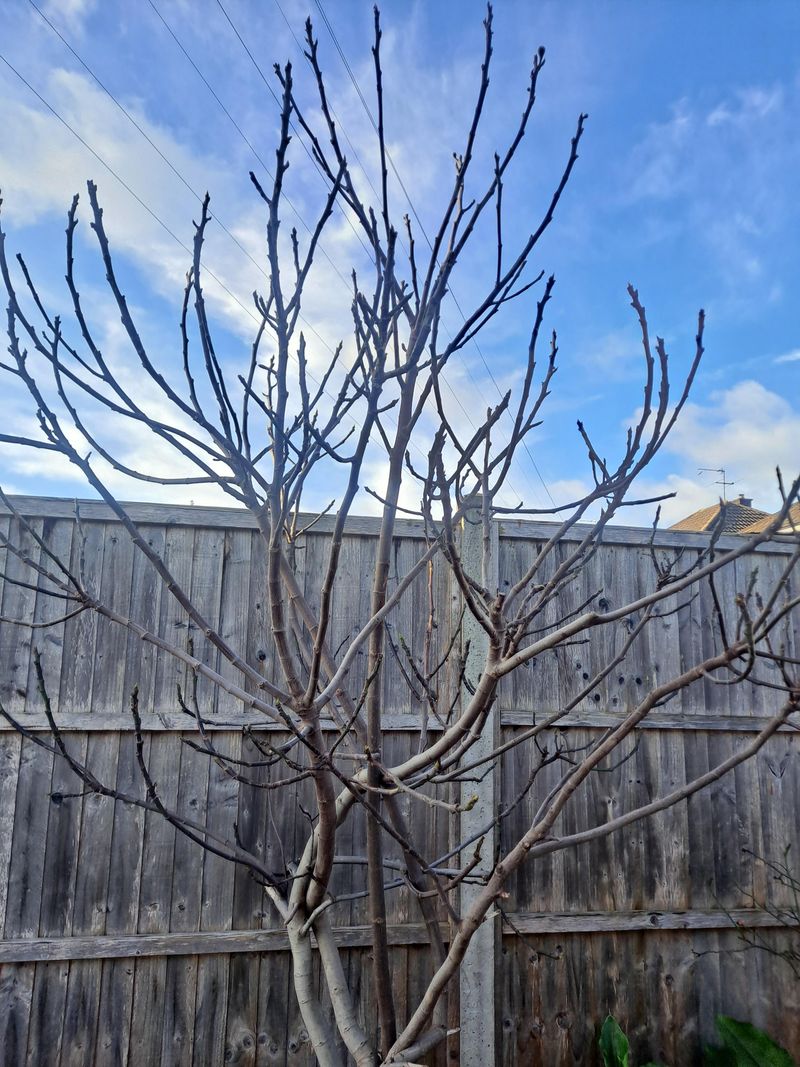Pruning a fig tree? It’s not as simple as grabbing the shears and hoping for the best. One wrong move can leave you with weak branches, fewer figs, or a tree that just looks off. I’ve made those mistakes myself—and figured out what actually works.
These 24 common slip-ups are easy to avoid once you know what to watch for. And I’ll show you exactly what to do instead, so your fig tree stays healthy, strong, and ready to produce.
1. Pruning at the Wrong Time
Timing can make all the difference. Winter may feel like a good time to stay indoors, but it’s also a critical moment for pruning. Fig trees, like many others, have their own schedules, and respecting their dormancy is key. Ensure to prune when the tree is dormant to prevent unnecessary stress.
By choosing the right season, you’re helping the tree to heal efficiently. Pruning during the growing season may expose the tree to infections and pests. Don’t let your timing blunder harm your tree’s health.
2. Using Dull Tools
Sharpness isn’t just about keeping up appearances. It’s about efficiency and care. Using dull tools can cause ragged cuts that may damage the tree’s delicate branches. When a fig tree faces such trauma, it becomes susceptible to disease.
Always ensure your tools are well-maintained and sharp. This not only makes the job easier but also promotes clean cuts. Remember, a clean cut is a happy cut, minimizing the risk of infection. Keep those blades gleaming for best results.
3. Over-pruning
Less is more. This principle holds true in the garden as well. Over-pruning can shock a fig tree, leading to reduced fruit production and even death. It’s easy to get carried away, thinking more cuts mean better shape, but restraint is crucial.
Fig trees need leaves to photosynthesize, so stripping it bare is counterproductive. Always remember to leave enough foliage for the tree’s health. Finding the balance between aesthetics and growth is the key to success.
4. Pruning in Wet Conditions
Wet weather and pruning don’t mix well. Moisture can introduce fungal infections to the tree’s freshly cut branches. Avoid pruning when it’s raining or when the tree is wet. Fig trees, like most plants, are vulnerable to waterborne diseases, and cutting them open during such times invites trouble.
Wait for a dry day to ensure the cuts heal properly and don’t invite unwanted guests. By being patient, you’re doing your fig tree a great service.
5. Neglecting Sanitation
Cleanliness meets botanical bliss. Before you start snipping away, ensure your tools are sanitized. Dirty tools can introduce diseases to your fig tree, compromising its health. It’s like gardening 101, yet often overlooked.
A quick wipe with disinfectant can save your tree from potential harm. Fig trees are resilient, but they aren’t immune to infections spread by dirty blades. Keep your pruning tools clean and your fig tree will continue to thrive.
6. Cutting Too Close to the Trunk
Precision is not just for surgeons. When pruning, avoid cutting too close to the trunk. Doing so can damage the tree’s bark and lead to decay. Fig trees need a little bit of space for proper healing. Leave a small stub to prevent unnecessary harm.
This simple step can make a huge difference in the tree’s recovery process. Remember, patience and care during pruning will yield better long-term results.
7. Ignoring Tree Shape
Symmetry in nature is a beauty to behold. Ignoring the natural shape of your fig tree can lead to uneven growth and a less productive plant. When pruning, aim to maintain a balanced shape that allows light to penetrate the canopy evenly.
This promotes healthy growth and maximizes fruit production. Fig trees benefit from a little well-planned artistry. By considering the tree’s natural form, you’ll create a more aesthetically pleasing and fruitful tree.
8. Pruning Too Close to Buds
Those tiny buds hold promise for the future. Cutting too close to them can jeopardize the next season’s growth. Fig trees depend on these buds for their new leaves and fruits. Leave a small gap when pruning to protect them.
It’s a little like giving someone personal space; they thrive when they’re not overcrowded. Respecting the buds is essential for a successful pruning mission. This way, you’ll ensure a lush and productive fig tree.
9. Ignoring Suckers and Water Sprouts
Little rebels at the base can hijack the show. Fig trees often sprout suckers and water sprouts that compete for nutrients. These unwanted shoots can drain your tree’s energy, hampering fruit production. Regularly check and remove them to maintain tree vitality.
It’s like clearing the clutter to let the real stars shine. By keeping these growths in check, you free up resources for the main branches to flourish. Your fig tree’s productivity will speak volumes.
10. Forgetting to Seal Large Cuts
Open wounds need attention. When making large cuts, sealing them helps prevent disease and pest entry. Fig trees, like any living organism, benefit from a little care after surgery. Use a tree sealant or paste to cover the cut and protect it from the elements.
This simple step ensures a faster recovery and lessens the chance of infection. Think of it as a band-aid for your fig tree. A little effort goes a long way.
11. Cutting Healthy Branches
Ouch, that’s a bummer! Cutting healthy branches can be a costly mistake, as they contribute to the tree’s growth and fruit production. Fig trees need their healthy limbs to photosynthesize and flourish. Before making any cuts, carefully assess which branches truly need removal.
It’s like giving a haircut; you don’t want to snip off the good stuff. Keep the vital branches intact, and your fig tree will continue to thrive and produce delicious fruits.
12. Neglecting Branch Angles
Angles matter more than you might think. Pruning fig tree branches at incorrect angles can lead to weak growth and breakage. Aim for cuts at a 45-degree angle to promote strong, healthy branches.
This technique allows water to run off easily, reducing the risk of rot. Fig trees appreciate well-thought-out cuts, and proper angles are part of the package. By paying attention to this detail, you’ll support robust and enduring branches.
13. Overlooking Air Circulation
Fresh air isn’t just for humans. Fig trees thrive when there’s good air circulation within their canopy. Overlooking this can lead to fungal infections and reduced fruit production. When pruning, ensure there’s enough space between branches for air to flow freely.
This not only keeps the tree healthy but also increases sunlight exposure. Think of it as decluttering your closet; everything breathes easier. Prioritizing air circulation is a must for a thriving fig tree.
14. Ignoring the Tree’s Natural Form
Nature knows best. Forcing fig trees into unnatural shapes can hinder their growth and fruiting. By respecting the tree’s natural form, you’ll promote better health and productivity. When pruning, follow the tree’s inherent structure rather than imposing your own design.
It’s a little like letting your hair do its thing; sometimes natural is best. By honoring the tree’s form, you’ll create a more harmonious and fruitful plant.
15. Pruning Without a Plan
Winging it rarely works out well. Pruning without a plan can lead to haphazard cuts and a disorganized tree. Fig trees benefit from a thoughtful approach, considering both their current state and future growth. Before you start, take a moment to assess the tree and determine your goals.
It’s like going on a road trip; you need a map to reach your destination. A clear plan ensures your fig tree remains healthy and productive.
16. Not Considering Future Growth
Think ahead, avoid regrets later. Fig trees grow quickly, and failing to consider their future size can lead to problems. When pruning, leave room for the branches to expand without encroaching on structures or other plants.
It’s akin to planning a party; you need enough space for everyone to mingle. By anticipating future growth, you’ll avoid the need for drastic pruning later. Your tree will have room to thrive and flourish.
17. Pruning When Stressed
Stress and haste make waste. Pruning when you’re under pressure can lead to mistakes that harm your fig tree. Take a deep breath and approach the task with a calm mind. Fig trees appreciate careful handling, and a relaxed gardener makes better decisions.
It’s like cooking; rushing can ruin a perfectly good dish. By staying calm and focused, you’ll ensure your tree receives the best care possible. Your fig tree deserves it.
18. Ignoring Local Climate
Mother Nature has her quirks. Pruning without considering the local climate can adversely affect your fig tree. In colder regions, it’s important to avoid major cuts before frost, as the tree may not recover well. Fig trees have different needs depending on their environment.
By understanding your local climate, you can tailor your pruning approach for optimal results. It’s like dressing for the weather; tailor your actions to suit the conditions.
19. Poor Cleanup After Pruning
A tidy garden is a happy garden. Failing to clean up after pruning can leave your fig tree susceptible to pests and disease. Remove all cut branches and leaves from the ground to prevent infestations. This simple practice helps maintain a healthy environment for your tree.
Think of it like cleaning up after a party; no one wants to deal with the mess later. Proper cleanup keeps your fig tree’s surroundings pristine.
20. Ignoring Soil Conditions
Soil is the unsung hero of a healthy garden. Overlooking soil conditions can hinder your fig tree’s growth and fruiting potential. Check the soil’s pH and nutrient levels before pruning to ensure it’s conducive to growth.
Fig trees thrive in well-balanced soil, and a little attention can go a long way. It’s like checking the tires before a road trip; preparation is key. Healthy soil sets the stage for a thriving fig tree.
21. Pruning with Dirty Hands
Grime isn’t just unsightly; it’s a threat. Handling a fig tree with dirty hands can introduce pathogens that harm the plant. Always wash your hands before starting to prune. Clean hands ensure you’re not spreading any unwanted guests.
It’s a simple step that can make a big difference. Think of it as washing your hands before dinner; hygiene matters. Keep your fig tree healthy by maintaining clean hands during pruning.
22. Pruning Without Protective Gear
Safety first, even in the garden. Pruning without gloves or protective eyewear can lead to injuries. Fig trees have branches that can snap back unexpectedly. Protect yourself by wearing gloves and safety glasses.
It’s like wearing a seatbelt in a car; accidents happen, and it’s best to be prepared. By prioritizing safety, you’ll avoid unnecessary pain and ensure a smooth pruning experience. Your hands and eyes will thank you.
23. Ignoring Nutrient Needs
Feed me, Seymour! Fig trees, like any other plant, need nutrients to thrive. Ignoring their nutritional needs can lead to poor growth and fruiting. Before pruning, assess if your tree is getting enough nutrients, and add supplements if necessary.
It’s akin to having a balanced diet; without the right nutrients, things can go awry. By addressing nutritional needs, you’ll support your tree’s health and productivity. Nourish your fig tree for a fruitful future.
24. Pruning to Control Size Excessively
Small isn’t always better. Fig trees naturally grow to a certain size, and excessive pruning to control their size can be detrimental. While it’s important to manage growth, overdoing it can harm the tree’s health and fruit production.
Allow the tree to reach its natural size while guiding its shape. It’s like wearing shoes two sizes too small; discomfort ensues. By respecting the tree’s natural growth, you’ll ensure a healthy and productive plant.
25. Not Respecting Tree’s Age
Age brings wisdom and fragility. Pruning young fig trees too aggressively can stunt their growth and development. Respect the age of your tree and tailor your pruning accordingly. Young trees need more careful handling, akin to toddlers needing gentle guidance.
Over-pruning can lead to setbacks that affect long-term growth. By respecting the tree’s age, you’ll promote a strong foundation for future health and productivity. Your fig tree will grow robust and fruitful.
26. Ignoring Invasive Pests
Unwanted guests can wreak havoc. Ignoring pests during pruning can lead to infestations that weaken your fig tree. Regularly inspect for signs of insects and address them promptly. Fig trees are susceptible to various pests, and vigilance is key.
It’s like having a house party; you don’t want gate-crashers ruining the fun. By managing pests, you’ll protect your tree from potential harm and ensure its continued growth and productivity.
27. Failing to Remove Crossing Branches
A tangled mess spells trouble. Crossing branches rub against each other, causing wounds that invite disease. Fig trees benefit from a clear structure, so remove any branches that intersect. This simple step prevents damage and promotes healthy growth.
It’s like untangling a necklace; everything looks and functions better when straightened out. By addressing crossing branches, you’ll create a healthier environment for your fig tree.
28. Pruning Too Early
Patience rewards in gardening. Pruning too early in the season can damage tender buds and shoots. Fig trees need time to develop before you start snipping away. Wait until after the last frost to begin pruning.
It’s like waiting for the traffic light to turn green; timing is everything. By exercising patience, you’ll ensure your fig tree has the best chance for robust growth and a bountiful harvest.

